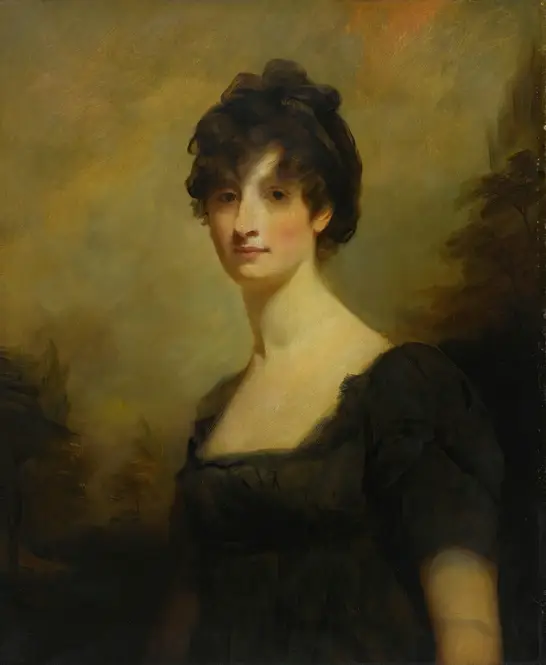Sir Henry Raeburn
Sir Henry Raeburn (1756–1823), English, A master of portraiture during Scotland’s cultural renaissance, this artist captured the spirit of the Enlightenment with a keen eye for character and texture. His work is distinguished by bold, fluid brushwork and a remarkable ability to convey the intelligence and vitality of his subjects—often Edinburgh’s leading intellectuals, lawyers, and aristocrats. Unlike the stiff formalism of earlier portraitists, his compositions feel dynamic, with figures poised mid-gesture or bathed in dramatic chiaroscuro, as if caught in a moment of thought. The iconic *The Reverend Robert Walker Skating on Duddingston Loch* exemplifies his knack for blending realism with whimsy, transforming a local minister into a figure of effortless grace against a winter landscape.
Though largely self-taught, his technique evolved through study in Italy, where he absorbed the grandeur of Renaissance masters while retaining his distinctive vigor. Raeburn’s influence extended beyond his lifetime, shaping the Scottish Romantic movement and earning admiration from contemporaries like Sir Joshua Reynolds. Yet his legacy was somewhat overshadowed by London-centric art histories until later reappraisal highlighted his role in defining a distinctly Scottish visual identity. Today, his works—whether the penetrating gaze of *Sir Walter Scott* or the warmth of *The MacNab*—reveal a artist who could distill ambition, wit, and humanity onto canvas with unmatched immediacy.
Though largely self-taught, his technique evolved through study in Italy, where he absorbed the grandeur of Renaissance masters while retaining his distinctive vigor. Raeburn’s influence extended beyond his lifetime, shaping the Scottish Romantic movement and earning admiration from contemporaries like Sir Joshua Reynolds. Yet his legacy was somewhat overshadowed by London-centric art histories until later reappraisal highlighted his role in defining a distinctly Scottish visual identity. Today, his works—whether the penetrating gaze of *Sir Walter Scott* or the warmth of *The MacNab*—reveal a artist who could distill ambition, wit, and humanity onto canvas with unmatched immediacy.
-

Portrait Of Mrs. Blair
Sir Henry Raeburn (English, 1756–1823)A luminous portrait capturing quiet elegance, where light and shadow breathe life into the subject’s poised grace.
